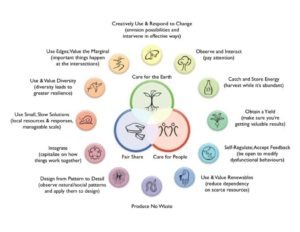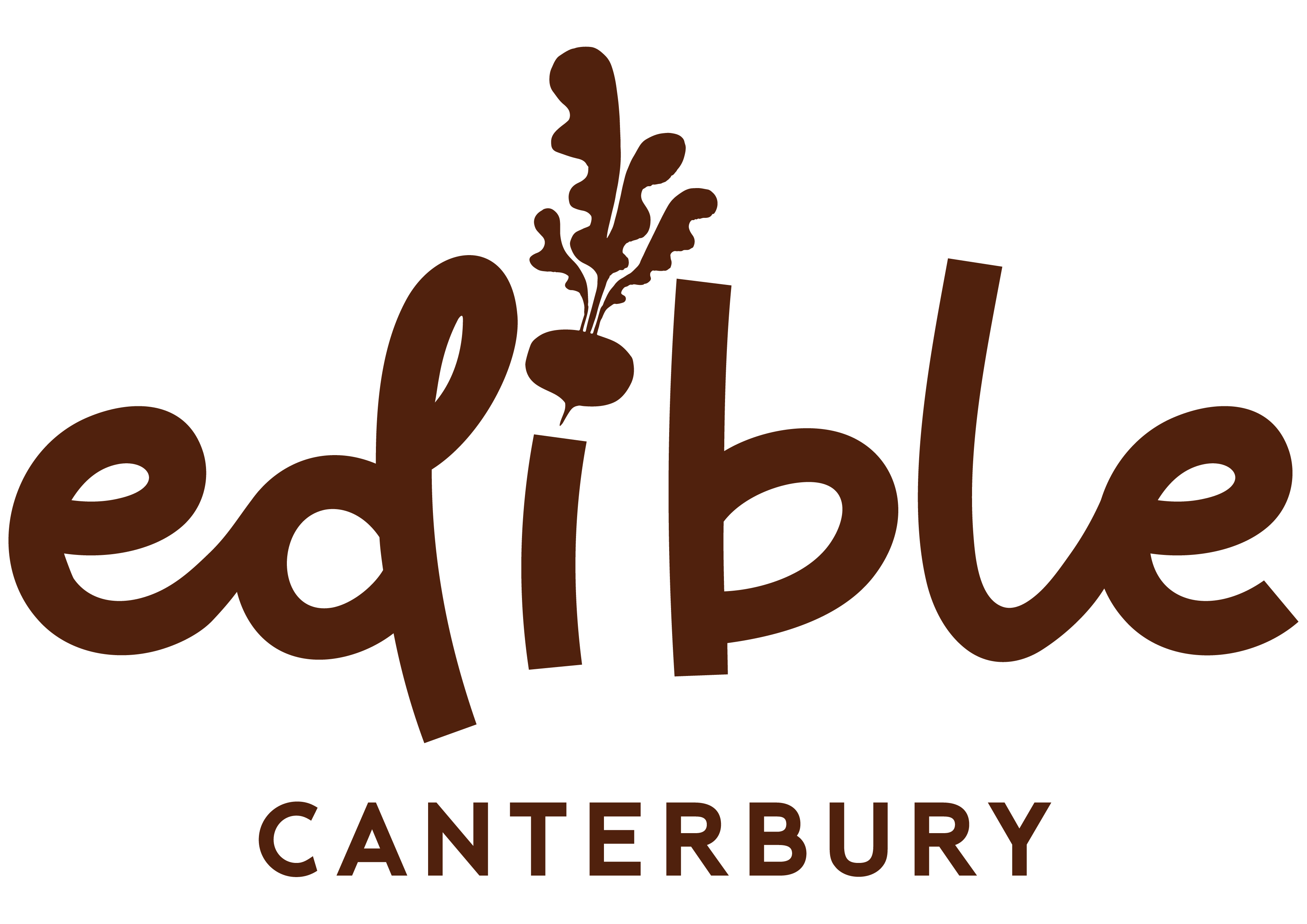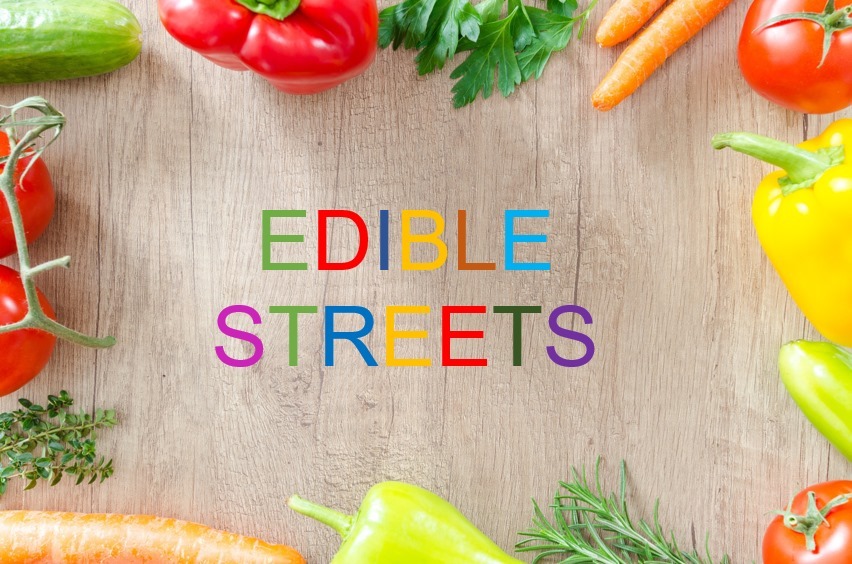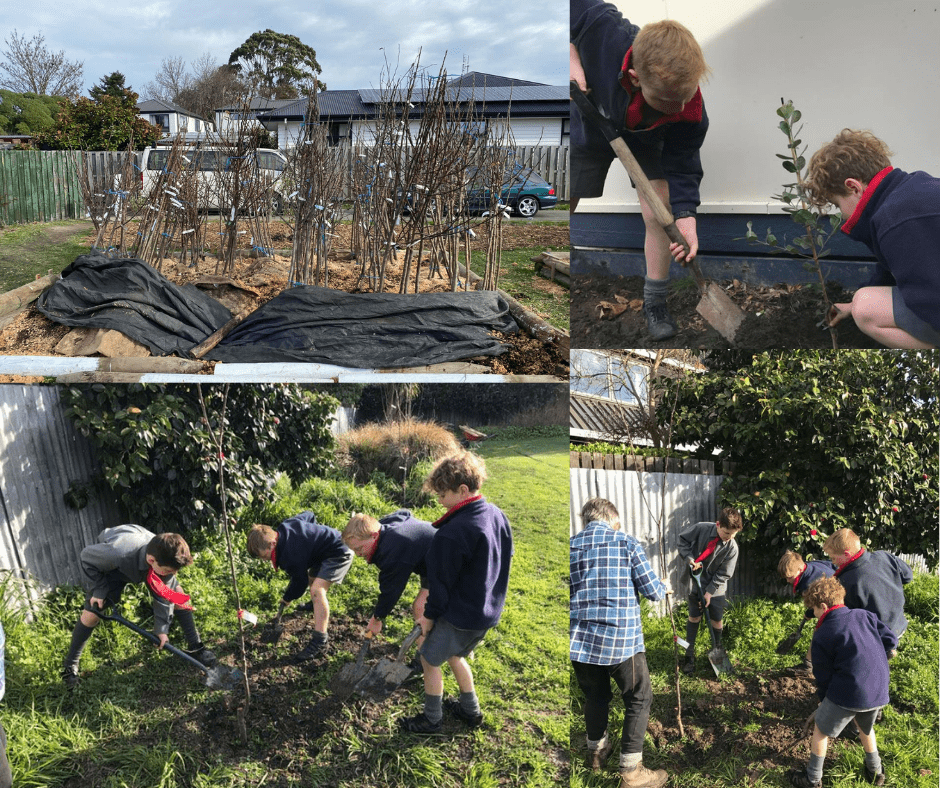In February we gathered again, this time for our first official Food Talks event, around the idea of Permaculture.
We were lucky enough to have Hamish Duff (Educator, Futurist and Food Resilience Network Committee member) join us to tell us the story of the continuing journey to create a permaculture system on the land that he and Louise own in West Melton.
“One way permaculture differs from other methods of gardening is that it is not just a set of practical techniques; it is a way of thinking and of adapting to a particular ecology. Whether you are starting a new garden, or introducing permaculture practices to an existing garden, these principles will help you to understand the design process. —Christopher Shein”
Permaculture is, as stated in the quote above, a way of thinking and adapting to a particular ecology. It invites observation, experimentation and evaluation into the way we interact in a landscape, as well as designing and implementing strategies to introduce relationships between different elements with the system as a whole.
The 3 main tenants of permaculture are Earth Care, Fair Share and People Care.
Earth Care invites us to implement systems that care for or regenerate the living systems of the earth – soil, water, air and all living organisms play a role in preserving and replenishing the health and energy of the earth. Science shows us through the disciplines of ecology and biology, all living and non-living systems are interconnected and interdependent. When one is affected, all are affected. We can act as guardians in our ecosystems.
People Care reinforces the inter-connectivity of life. No matter where you go on Earth you will that all life lives within systems, and each aspect of an ecosystems relates, supports and relies on each other to thrive. People care invites self reliance and an inter-relational responsibility within t
he greater community. A term I like to use in relation to People Care is Community Sufficiency. Moving from a focus on community sufficiency, rather than self sufficiency, opens up the possibilities around how we can play a role in supporting each other through developing a distributed web of connectivity, which provides much greater resilience.
When people collaborate to support each other, and to meet their needs, both physical and non-physical, this creates a bond which builds a stable, supportive, and emotionally healthy community which prospers.
Fair Share is also described as the ethical principle of “Return of surplus to Earth and people”. No matter how you look at it, the world’s resources are finite, so logically it follows that there is a finite and measurable share of resources available to each person on the planet to support them. When acting as individuals within the wider ecosystem it is hard not to sit in a space of accumulation of resources, however, when we accumulate beyond our share
of the finite resources we are, essentially, taking from someone else’s share. This is where inequality amongst humans has its roots, but also why most of our ecosystem is operating from a position of deficit. Humanity is using more than its fair share of resources on Earth.
Instead of accumulating and creating deficits, we can adopt a way of living that recognises the limits of the resources that are available, creates abundance and then distributes that abundance back into the ecosystem. This is beyond the idea of sustainability and reaches into a place of  regeneration.
regeneration.
Under the 3 main tenants of Permaculture sit 12 design principles. These design principles are strategies for us to make decisions that create the most abundance within our ecosystem.
Twelve Permaculture design principles articulated by David Holmgren in his Permaculture: Principles and Pathways Beyond Sustainability:
- Observe and interact: By taking time to engage with nature we can design solutions that suit our particular situation.
- Catch and store energy: By developing systems that collect resources at peak abundance, we can use them in times of need.
- Obtain a yield: Ensure that you are getting truly useful rewards as part of the work that you are doing.
- Apply self-regulation and accept feedback: We need to discourage inappropriate activity to ensure that systems can continue to function well.
- Use and value renewable resources and services: Make the best use of nature’s abundance to reduce our consumptive behavior and dependence on non-renewable resources.
- Produce no waste: By valuing and making use of all the resources that are available to us, nothing goes to waste.
- Design from patterns to details: By stepping back, we can observe patterns in nature and society. These can form the backbone of our designs, with the details filled in as we go.
- Integrate rather than segregate: By putting the right things in the right place, relationships develop between those things and they work together to support each other.
- Use small and slow solutions: Small and slow systems are easier to maintain than big ones, making better use of local resources and producing more sustainable outcomes.
- Use and value diversity: Diversity reduces vulnerability to a variety of threats and takes advantage of the unique nature of the environment in which it resides.
- Use edges and value the marginal: The interface between things is where the most interesting events take place. These are often the most valuable, diverse and productive elements in the system.
- Creatively use and respond to change: We can have a positive impact on inevitable change by carefully observing, and then intervening at the right time.
I hope that by reading this and watching the video above it is a good introduction into the world of permaculture – theory and practice.



